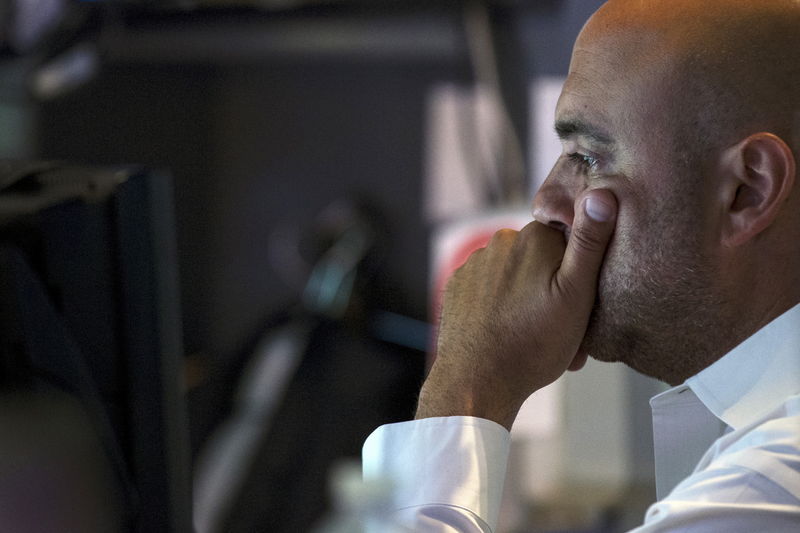* Stocks eye biggest weekly rise since Nov. 2012
* Fed minutes cool rate rise prospects
* Zinc soars on Glencore output cut
By Jamie McGeever
LONDON, Oct 9 (Reuters) - World stocks rose on Friday,
putting them on course for their biggest weekly rise in four
years after minutes of the Federal Reserve's last policy meeting
showed the U.S. central bank is in no rush to raise interest
rates.
Investors' relief that the Fed probably won't move until
some time next year saw them take on more risk across the board,
with commodities and emerging market assets also recovering some
of their recent heavy losses.
Brent crude oil was on track for its biggest weekly rise
since March 2009, while zinc soared 9 percent - its biggest
daily gain for seven years - after troubled mining giant
Glencore GLEN.L said it would cut production. ID:nL3N1285EM
In early trading, the MSCI world equity index
.MIWD00000PUS was up 0.6 percent. That was the eighth rise in
a row, and put the index up 4.3 percent on the week, its best
performance since late 2011.
The FTSEuroFirst index of the leading 300 European shares
was up 0.8 percent .FTEU3 on the day and up 5 percent on the
week. Germany's DAX .GDAXI and France's CAC 40 .FCHI were
also up 0.8 percent in early trading.
"Investors love these Fed minutes because they signal a
strong economy and low rates," said Jasper Lawler, market
analyst at CMC Markets in London.
"If the decision was a close call then the message is that
the Fed feels good about the U.S., but is just being cautious
over emerging markets," he said.
The Fed minutes revealed the extent to which policymakers
are concerned that a global economic slowdown might threaten the
U.S. economic outlook. Though they said overseas turmoil had not
"materially altered" economic prospects, they opted to hold
interest rates steady last month. ID:nL1N128230
An unexpectedly weak U.S. jobs report for September last
week had led many investors to speculate that the Fed will not
deliver its first hike since 2006 until 2016, a feeling that was
strengthened by the minutes.
Earlier in Asia MSCI's broadest index of Asia-Pacific shares
outside Japan .MIAPJ0000PUS rose 1.4 percent, on track for a
robust weekly gain of 6.5 percent, its best week in four years.
Japan's Nikkei .N225 rose 1.6 percent.
U.S. futures pointed to some light profit-taking at the open
on Wall Street as the U.S. earnings season gets into full swing,
with the S&P 500 expected to come off 0.3 percent from
Thursday's seven-week closing high ESc1 .
PIVOT POINT?
The relief rally and bargain-hunting across commodities and
emerging markets got a shot in the arm on Friday, with Brent
crude oil futures LCOc1 on course for a rise of more than 11
percent on the week.
Brent was last up 0.8 percent on the day at $53.46 a barrel,
and U.S. crude was up 1.2 percent at $50.01 a barrel CLc1 . Oil
also got a boost overnight after forecaster PIRA Energy Group
predicted crude prices would rise to $70 per barrel by the end
of 2016. ID:nL1N1281EF
"For now, the cloud of uncertainty has been lifted and
traders have pivoted," said Naeem Aslam, chief market analyst at
Avatrade.
Three-month zinc futures CMZN3 were up 9 percent on the
London Metal Exchange at $1,818 a tonne after Glencore said it
will cut production by 500,000 tonnes, equivalent to 4 percent
of the world's output.
Zinc had fallen 30 percent since May to a five-year low, so
the rebound could mark the bottom of the market and the
commodities complex in general, some analysts said.
Still, there are grounds for caution in commodities, as
highlighted by Alcoa (NYSE:AA)'s third quarter profit miss announced on
Thursday AA.N ID:nL3N1284RH
In currencies, the dollar retreated on the back of the
dovish Fed minutes, with the dollar index down around a third of
one percent .DXY and the euro up 0.5 percent at $1.1330
EUR= .
The 10-year U.S. Treasury yield US10YT=RR slipped a couple
of basis points to 2.09 percent, as did the 30-year yield to
2.92 percent US30YT=RR .
On Thursday HSBC issued one of the boldest U.S. and European
yield forecasts of all the big investment banks, predicting the
10-year U.S. yield will fall to 1.5 percent and the equivalent
German bund yield at just 0.2 percent next year.
